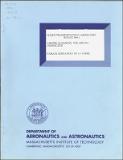Airline alliances : the airline perspective
Author(s)
Fernandez de la Torre, Pablo E.
DownloadFTL_R_1999_01.pdf (16.69Mb)
Other Contributors
Massachusetts Institute of Technology. Flight Transportation Laboratory
Metadata
Show full item recordAbstract
Airline alliances are one of the critical issues faced by the airline industry in the 1990s. In this thesis, an overview of the most significant impacts that the formation of alliances have brought to the industry-especially to airline management-is presented. Part I presents several frameworks to help understand why alliances have become so critical for the participating airlines. A definition of airline alliances, different typologies to classify them, the main motivations for their formation, and the recent trends in the industry are presented. The alliances' main objective is the increase of market coverage, though the strengthening of market position on certain routes and the reduction of costs are additional sources of competitive advantage they provide to the participating airlines. Alliances can also bring many benefits to customers in terms of improved service, although they represent a threat for sustainable competition. Part II analyzes two critical problems faced by airline management. First, it is analyzed the effect of the network connectivity through an alliance hub-to-hub linkage scheme on the increase in market share. The analysis shows that the alliance hub-to-hub link represents a significant source of additional traffic for the alliance. Accessibility, a measure developed for network connectivity, has proven to be a critical factor in increasing market share on the alliance hub-to-hub link. Scheduling coordination within alliances, therefore, should consider the maximization of accessibility as a critical driver of demand. The second problem analyzed is the introduction of codesharing into revenue management systems. There are four different problems associated with it, which are interrelated in practice. One of them, the valuation and seat inventory control process for codeshare traffic is analyzed in detail. Two main revenue management approaches to handle codesharing are presented: The proration approach and the fully integrated approach. The latter aims to maximize the combined revenue and implies higher complexity in its implementation, while the former has easier implementation. Under the proration approach, there is a significant source of revenue loss due to an incorrect valuation of the revenue contribution brought by codeshare traffic. Although a solution is proposed to solve this problem, a final answer should include a redefinition of the way codesharing agreements are currently established.
Description
Includes bibliographical references (p. 211-214)
Date issued
1999Publisher
Cambridge, Mass. : Massachusetts Institute of Technology, Dept. of Aeronautics and Astronautics, Flight Transportation Laboratory, [1999]
Other identifiers
663476240
Series/Report no.
FTL report (Massachusetts Institute of Technology. Flight Transportation Laboratory) ; R99-1
Keywords
Airlines, Airlines, Management